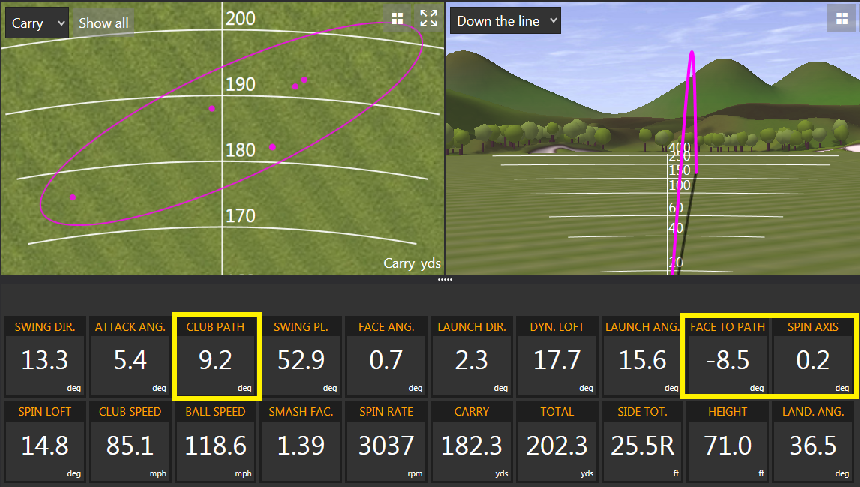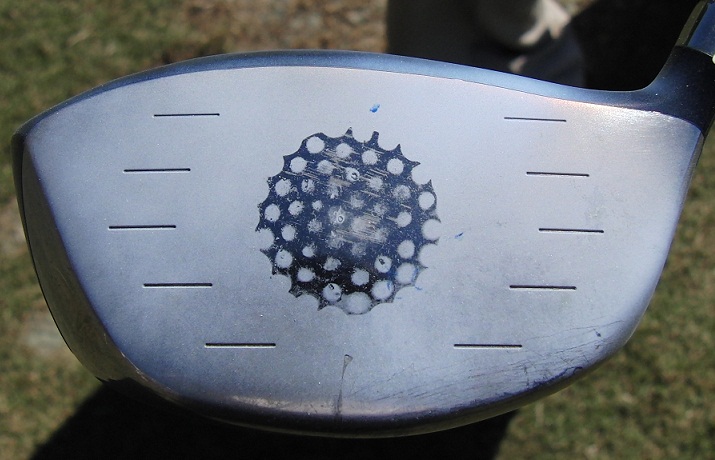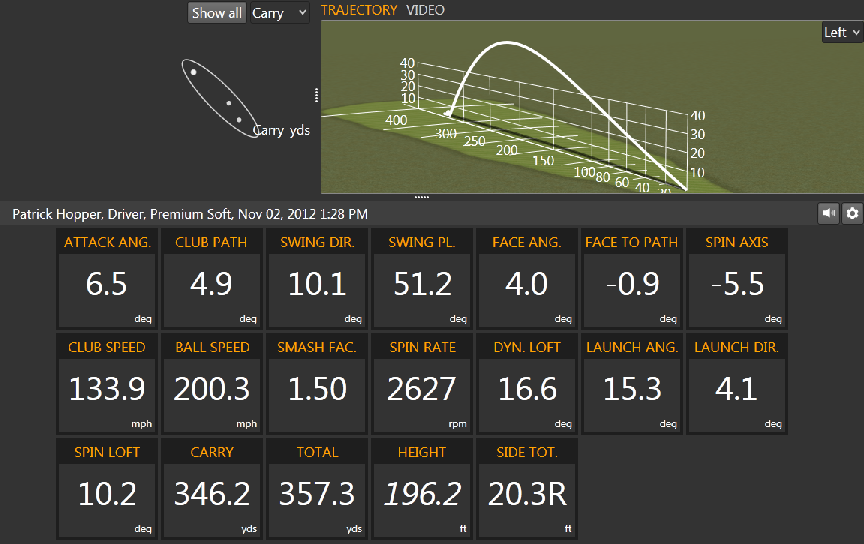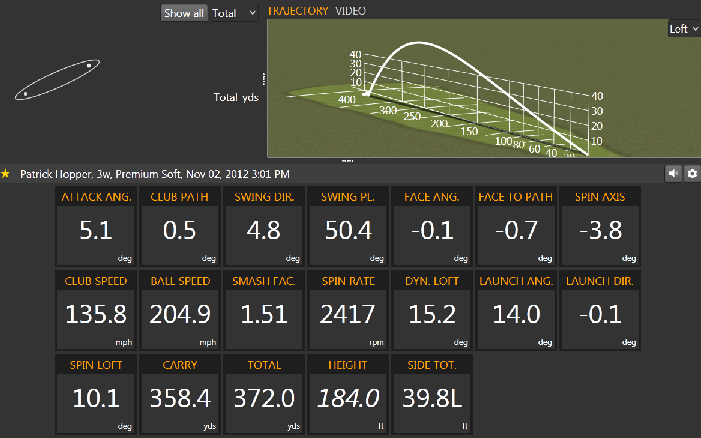Swing Pattern vs Strike Point
/You may have heard me talk about how common it is to see golfers hit a tee shot with a fade (out-to-in club path) swing pattern, yet strike it off the toe for a baby draw or vice versa. The other day I was giving a lesson and a student hit a shot that was too interesting to not share. Here are the TrackMan details of the driver shot:
First a few basics:
- Club path is primarily responsible for the curve of any shot
- The direction of the club path relative to the target, out-to-in (fade pattern) or in-to-out (draw pattern), is what I refer to as a players swing pattern
- Players that swing from in-to-out will tend to hit draws and players that swing from out-to-in will tend to hit fades
- Where the ball is struck on the face of the driver (strike point) can drastically alter the effect of a players swing pattern on ball flight
- Shots struck off the heel will tend to fade more or draw less and shots struck off the toe will tend to draw more or fade less
The player who hit the above shot has a fairly strong draw bias to his swing pattern and we are always working to neutralize his strong in-to-out club path as he tends to struggle with blocks and hooks. As you can tell from the above shot the club path (first highlighted yellow box) was strongly from in-to-out - 9.2 degrees to the right of the target. Well then why did the ball fly straight (spin axis 0.2)
The particular shot we're looking at was struck well off the heel (yellow circle) and essentially what happened was the draw bias of the swing pattern was cancelled out by the fade bias of the strike point. Notice how in the second yellow box above there's a closed face to path relationship, which should lead to a hook, but the ball flew straight - always a dead give away for a heel strike.
I've come up with a simple formula to help explain this:
A + B = C
Where A is the swing pattern, B is the strike point and C is the resultant ball flight. You see it's the combination of A and B that gives us the ball flight - not just A. Here's a video I did with TrackMan that might help to explain some of this more clearly:
When you're practicing driver you should always mark the face with some Dr. Scholl's Odor X foot spray. If you do that you will always get B (strike point) and C (ball flight) from any shot. Should you be practicing without a TrackMan you'll at least have a clear idea as to what your swing pattern is and can make well-informed adjustments if necessary.
All the best and thanks for reading.











